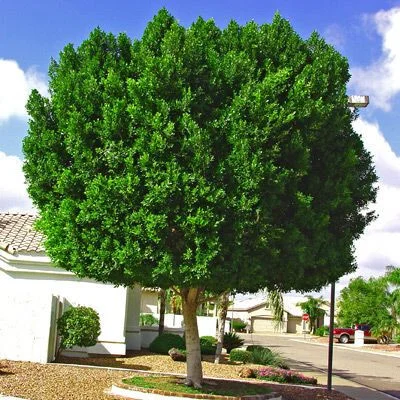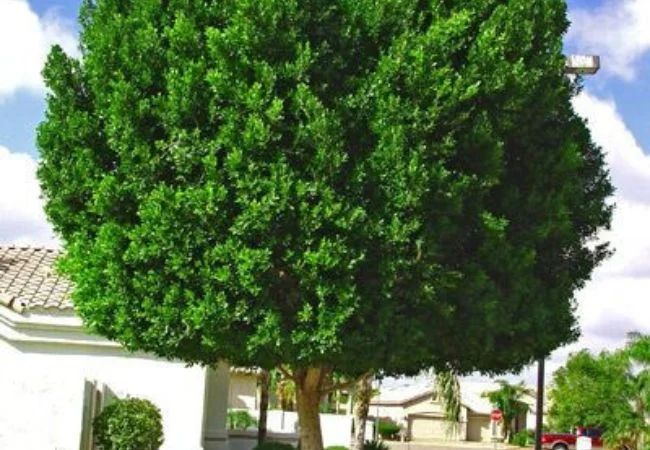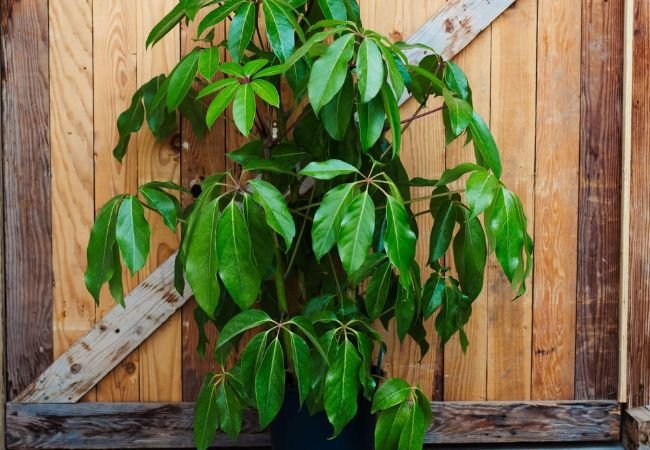Learn how to grow and care for Ficus Nitida (Indian Laurel Fig). This guide covers watering, pruning, light needs, and how to manage its roots in your landscape.
I’ve seen Ficus Nitida, also called Indian Laurel Fig, transform many landscapes. Its dense, glossy green foliage and fast growth make it a popular choice for hedges and shade. But I’ve also seen gardeners struggle when they don’t understand its specific needs. This tree is not a “plant it and forget it” species. It requires a clear strategy from the start.

Ficus Nitida is a versatile evergreen tree that can be grown as a large shrub for privacy, a towering shade tree, or even indoors in bright light. Knowing how to manage its growth is the key to a successful, long-term relationship with this beautiful plant.
What is Ficus Nitida?
Ficus Nitida is a broadleaf evergreen tree belonging to the mulberry family. In its natural habitat, it can grow over 50 feet tall with a wide, spreading canopy. The leaves are oval, glossy, and a vibrant green, providing year-round color. It’s important to note that all parts of the plant contain a milky sap that can be irritating to skin and is toxic if ingested.
How to Grow Ficus Nitida
Getting the initial conditions right will save you many problems later.
Climate and Location
Ficus Nitida thrives in USDA hardiness zones 9 to 11. It loves warm, sunny environments and is not frost-tolerant. Young trees can be damaged by temperatures below 32°F.
The most critical decision is where to plant it. This tree is known for its aggressive and extensive root system. You must plant it at least 30 to 50 feet away from structures, sidewalks, and sewer lines. Its roots can lift concrete and invade plumbing.
Sunlight
This tree performs best in full sun, meaning at least six to eight hours of direct sunlight daily. It can tolerate partial shade, but the growth may be less dense.
Soil and Planting
Ficus Nitida is adaptable to many soil types but demands excellent drainage. It cannot tolerate constantly waterlogged conditions. When planting, dig a hole that is two to three times wider than the root ball but no deeper. Planting too deep can lead to root rot.
A Quick Care Reference
| Care Aspect | Requirement |
|---|---|
| Light | Full sun to partial shade. |
| Watering | Deep, infrequent watering once established. |
| Soil | Well-draining; adaptable to pH. |
| Fertilizing | Balanced fertilizer in spring and summer. |
| Pruning | Regular pruning to control size and shape. |
Ongoing Care and Maintenance
Consistent care keeps your Ficus Nitida healthy and manageable.
Watering
For the first few months, water your new tree regularly to help it establish a strong root system. Once established, it becomes surprisingly drought-tolerant. The best method is deep, infrequent watering. This encourages roots to grow deeper into the soil. Allow the top few inches of soil to dry out between waterings.
Fertilizing
Feed your Ficus Nitida with a balanced, slow-release fertilizer in early spring and again in mid-summer. This supports its vigorous growth during the active seasons. Avoid fertilizing in late fall and winter when growth slows down.
Pruning and Shaping
Pruning is essential for this fast-growing tree. The best time for heavy pruning is late winter or early spring before new growth emerges. You can do light trimming throughout the growing season to maintain a shape.
Always use clean, sharp tools to make clean cuts. When creating a formal hedge, prune so the base is slightly wider than the top. This allows sunlight to reach the lower branches and keeps the foliage full from top to bottom. For more detailed tips, see our guide on hedge trimming.
Common Problems and Solutions
Even with good care, you might face these issues.
- Leaf Drop: This is the most common complaint. Ficus Nitida often drops leaves due to sudden changes in light, temperature, or watering. If you move a potted plant or there’s an early cold snap, expect some leaf loss. The tree usually recovers once it adjusts.
- Pests: Watch for aphids, scale, and spider mites. You can often control these with a strong spray of water from a hose or by using insecticidal soap or horticultural oil.
- Root Management: The aggressive roots are a long-term consideration. For trees planted near hardscapes, installing a root barrier at planting time can help direct growth downward and away from structures.
- Sooty Mold: This black, sooty fungus grows on the honeydew secreted by pests like aphids and scale. Controlling the pests will solve the mold problem.
Growing in Containers
Growing Ficus Nitida in a pot is an excellent way to control its size and root system. Use a large, sturdy container with excellent drainage. A well-draining potting mix is essential. You will need to water more frequently than an in-ground tree, as pots dry out faster. Regular pruning will also be necessary to keep the size in check. This is a great solution for patios or for gardeners in cooler climates who can bring the plant indoors for winter. Our guide on container gardening has more useful tips.
Final Thoughts
Ficus Nitida is a magnificent tree that offers quick shade and superb privacy. Its beauty comes with a responsibility to manage its growth. If you have the space and commit to its pruning and root management, it can be a stunning landscape centerpiece for years to come.
For more information on large tree selection and placement, the University of Florida IFAS Extension offers a comprehensive database of landscape plants.
Are you already growing a Ficus Nitida? What has your experience been with managing its growth? Share your stories in the comments below.






